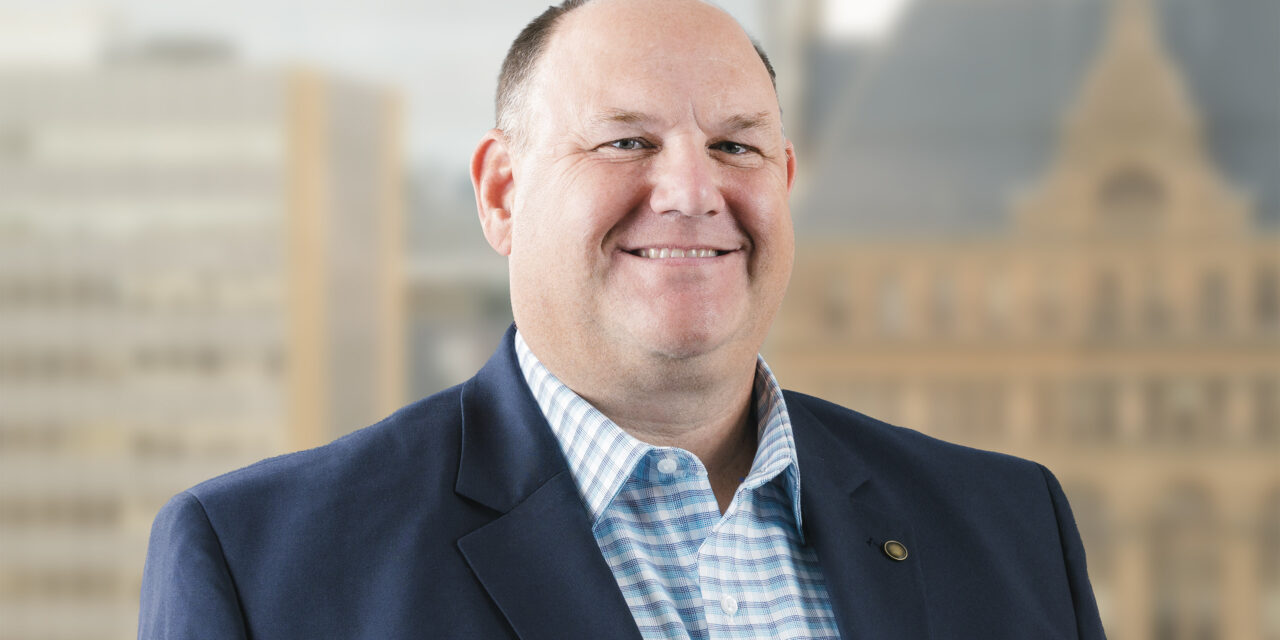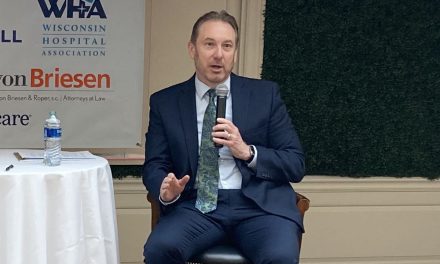
Health Payment Systems, PayMedix eye growth

Brian Marsella, the new president of Health Payment Systems and PayMedix, sees a bright future for their technology that simplifies the billing process.
PayMedix recently became available to networks beyond the one HPS offers. It provides prompt payments to providers and repayment plans to patients who need them.
“We’re a startup when it comes to PayMedix, in that we’ve got a spectacular idea that we need to broaden,” Marsella said in a recent interview with Wisconsin Health News. “We’ve been a proven entity in the market, and I think brokers, employers and hospitals all feel pretty good about us. And it’s not always easy to have all three of them feel good about you.”
Marsella joined HPS from Cigna, where he was market president for the Midwest region. Before that, he worked at Mercer, the world’s largest human resources consulting firm, and Aetna.
Edited excerpts are below.
WHN: Why are you joining HPS and PayMedix?
BM: I’ve been in the healthcare industry for 30 years. I started right out of college, with a large national insurance company in kind of their underwriting area, helping to build out the costs of care for different employers. And I held steadily advancing leadership roles through the years. In my last role at Cigna, I got reintroduced to an old friend, Tom Policelli, who’s the new CEO of PayMedix. I got reintroduced to him, as one of the divisions within Cigna was doing some work with a third-party administrator called Centivo and with HPS, and the patient-financing side associated with HPS being the PPO. And I was just very impressed with what they’re trying to solve, the issues that they’re trying to solve both in Wisconsin, just through trying to have affordable healthcare and options to some of the big carriers like United and Anthem that are out there, and allowing employers to have a lot more flexibility in their plan designs, and then also in the patient-financing piece that’s been built out here and that they’re working to build out nationally.
So it’s my first foray into a smaller company. My entire career has been Cigna, Aetna and Mercer. I think probably the smallest of those is 40,000 employees. When it comes to a small company, it’s definitely different for me. But I’m really excited to engage with a company that’s proven already, because they’ve been here for 14 years, but that’s on a very different growth trajectory. We can sort of act a little bit more like a startup when it comes to the nimbleness we’ll try and put forth with regard to decision-making and identifying new opportunities for growth, identifying new partners to engage with moving forward.
WHN: This year, HPS made its PayMedix technology available outside of its independent provider network. What’s the significance of that move?
BM: The company was founded here in Wisconsin based on the premise that if we could make an explanation of benefits a little less confusing, that would be helpful to the actual patient. And if we can help with the collection process, that would be helpful to the hospital. Quite frankly, it’s worked fairly well here for 14 years. Our new CEO has been looking at this sort of approach for a number of years. When he found PayMedix, he really felt like, ‘Look, we can take this more national.’
And quite frankly, we’re trying to solve a number of issues. From a member perspective, from a patient perspective, you have just the fact that many of them don’t have the money to pay upfront. And so that either becomes that they feel like they’ve got an adversarial relationship with their provider, which could impact their provider wanting to work with them, or they don’t seek care. We know 49 percent of Americans can’t pay a $400 bill if it was put in front of them … And then you’ve got hospital systems that are seeing bad debt go up and up … Bad debt has become a huge issue for them, even for people that have insurance. It’s because copays and coinsurance and deductibles are going up. And those are going up because employers have to do that to be able to offer a more affordable plan.
So, I’ve seen this in all my different areas as I’ve tried to get close to the patients, as I’ve tried to get close to hospitals and as I’ve worked with employers. If we could find a way to really simplify the billing process, if we can find a way to allow financing to happen across that billing process, we really have the opportunity to benefit all three of those different segments: the employer, the employee and the hospital system.
And so that’s the premise that we really have, that we can bring this nationwide now and build out with other hospital systems and physicians.
WHN: What’s been the response so far?
BM: We’re having great conversations with the third-party administrators we work with today, as well as others. And that’s a big piece of why I’ve been brought in, to really ramp those efforts up. And then we’ve had a number of conversations with hospital systems outside of Wisconsin. They’re very excited about the opportunity to be able to turn their bad debt and their accounts receivable over to us and allow us to put something in front of patients that’s much less confusing and much more user-friendly. We’re close to a few deals there as well.
WHN: What barriers are you facing for growth?
BM: I don’t think there’s going to be any limiting factors for growth in the long term, right? But in the short term, there is a lot we need to get done.
I think we’ve got the opportunity to work with more TPAs in the Midwest, to continue to use us as a network here in Wisconsin. I think we have the opportunity to go deeper with our current TPAs to be more utilized more often. Typically, it’s going to be a competition between that TPA and either a United, an Anthem or maybe some hospital-driven solutions. So I think there’s more we can do to show the value of our network. I think we compete incredibly well from a cost perspective. We just have to continue to show that, depict that to the brokers and the consultants that are the ones usually making some of the recommendations to the employers. We’ve got some work that we’ll be doing to try and build some of that out.
We do have to get the buy-in from the claim payer to engage with PayMedix, but I think we’ve got strategies to help them understand that this can only be a good thing for them to be able to simplify something on a monthly basis, sending out an explanation of benefits versus getting a whole bunch of piecemeal explanation of benefits. So that’s Wisconsin.
From a national perspective. I think a lot of it’s just gonna be around our ability to get our name out there and engage with individuals from both employers and broker-side as well as the hospital systems … We talked to a hospital the other day that said, ‘It sounds like you guys do a great job of helping the patients navigate this process. But we got to really do a lot of digging to make sure that really there is value in it for us.’ And you know, employers will have to say the same thing. As they’re thinking about all the myriad of different interventions they might put on their plan, they might look at a diabetes program or a wellness program. They may look at something else. They might look at centers of excellence or they might look at just changing plan designs. How does our patient-financing solution come into play?
I wouldn’t have come if I didn’t think it was going to go a long way. The employee-value proposition is something that most companies are really looking through. I’m the board chair of a nonprofit clinic and we’re even doing a deep dive into the employee-value prompt. Because you’re hearing about things like the great resignation. So employers are starting to really think about what can they do, from a salary perspective, a benefits perspective, other unique initiatives they can put into place, culture, diversity, equity, inclusion, what can they do. And I personally think this is something that fits into that world of this is an opportunity for you to help your folks from a less confusion and financing perspective. I think we’ll have an opportunity. When I was in my consulting world, we spent a lot of time with employers thinking about financial initiatives that could come into play that would help their population. And I think this fits into both the benefits world as well as the financial initiatives.
This article first appeared in the Wisconsin Health News daily email newsletter. Sign up for your free trial here.





